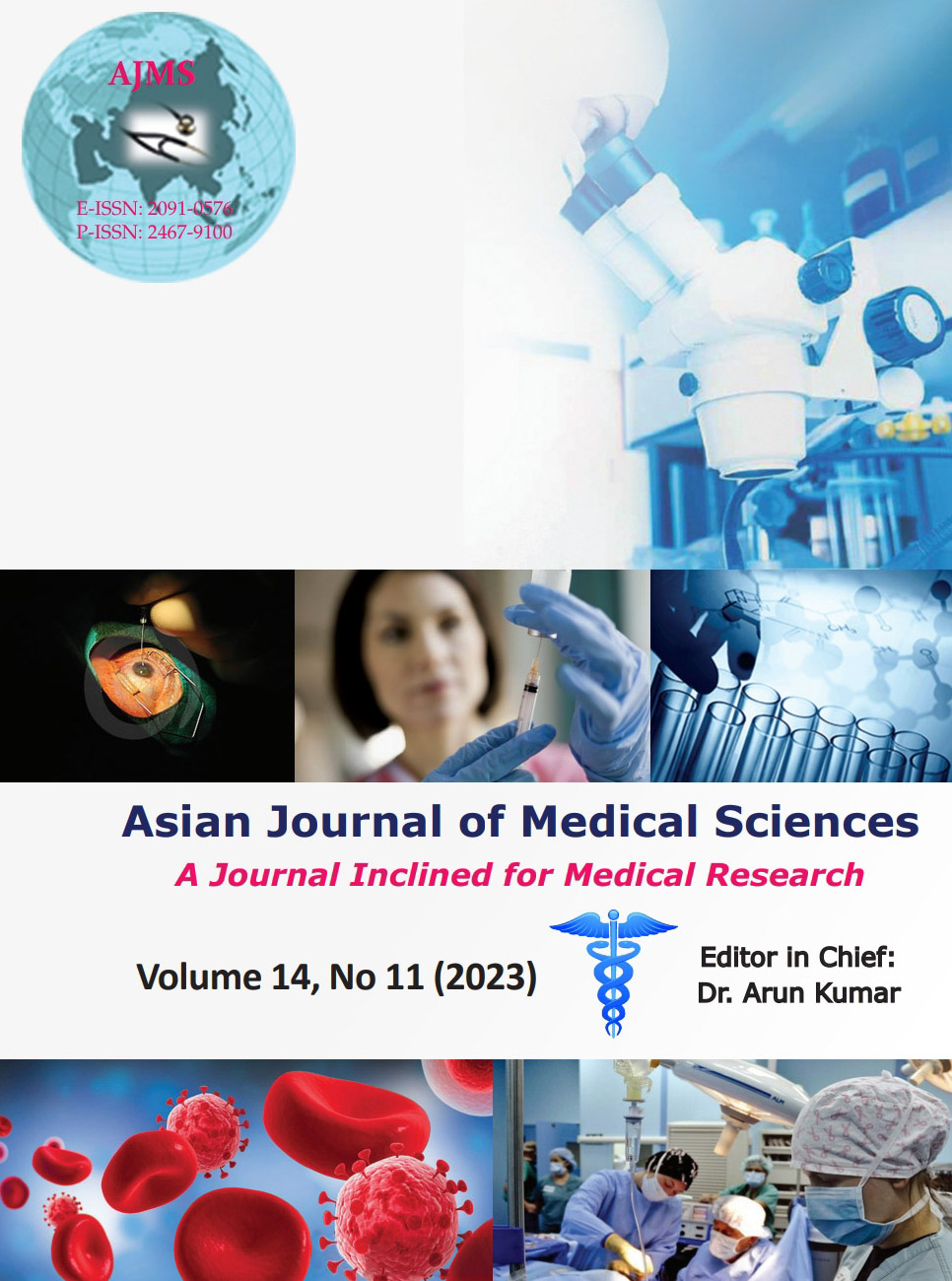Clinicobiochemical profile in de novo multiple myeloma: A study from North India
Keywords:
Multiple myeloma; Anemia; Renal dysfunction; Bony painsAbstract
Background: Multiple myeloma (MM) is the second most common hematological malignancy after non-Hodgkin lymphoma. The clinical spectrum varies from asymptomatic forms to manifestations of anemia, bone pains, and eventually spontaneous fractures, renal failure, and frequent infections.
Aims and Objectives: The aims and objectives of the study are to assess the clinical and biochemical parameters in newly diagnosed cases of MM.
Materials and Methods: This study was conducted in the Department of Clinical Hematology of a tertiary care hospital of North India. It was a prospective observational study over a period of 2-year duration. A total of 50 newly diagnosed patients of MM were enrolled and analyzed for clinical data.
Results: Out of 50 MM patients, 68% were males and 32% were females. Mean±SD of age was 62.48±8.140 years. Forty patients (80%) had anemia (isolated anemia 4 patients), 22 patients had renal failure (44%), 20 patients (40%) had spontaneous fractures (isolated pathological fracture 6 patients), and 14 patients (28%) had bone pains (isolated bone pains 4 patients). Mean±SD of hemoglobin before the start of treatment was 8.69±2.85 g/dL. Twenty-six patients (52%) had associated comorbidity mainly hypertension (32%) and diabetes mellitus (8%), while 48% of patients had no history of previous comorbid illness. Immunoglobulin (Ig)G-λ type MM were 16 cases (32%), IgA-λ type were 6 cases (12%), IgG-κ were 10 cases (20%), IgA- κ were 4 cases (8%), Kappa type were 10 cases (20%), and biclonal 2 cases (4%). Twelve patients (24%) were in the International Staging System (ISS), 22 patients (44%) in ISS-II, and 16 patients (32%) in ISS-III disease stage.
Conclusion: Treating physician should have a high index of suspicion for this disorder once elderly patients present with anemia, especially in combination with renal dysfunction and/spontaneous fractures for early diagnosis and treatment.
Downloads
Downloads
Published
How to Cite
Issue
Section
License
Copyright (c) 2023 Asian Journal of Medical Sciences

This work is licensed under a Creative Commons Attribution-NonCommercial 4.0 International License.
Authors who publish with this journal agree to the following terms:
- The journal holds copyright and publishes the work under a Creative Commons CC-BY-NC license that permits use, distribution and reprduction in any medium, provided the original work is properly cited and is not used for commercial purposes. The journal should be recognised as the original publisher of this work.
- Authors are able to enter into separate, additional contractual arrangements for the non-exclusive distribution of the journal's published version of the work (e.g., post it to an institutional repository or publish it in a book), with an acknowledgement of its initial publication in this journal.
- Authors are permitted and encouraged to post their work online (e.g., in institutional repositories or on their website) prior to and during the submission process, as it can lead to productive exchanges, as well as earlier and greater citation of published work (See The Effect of Open Access).




